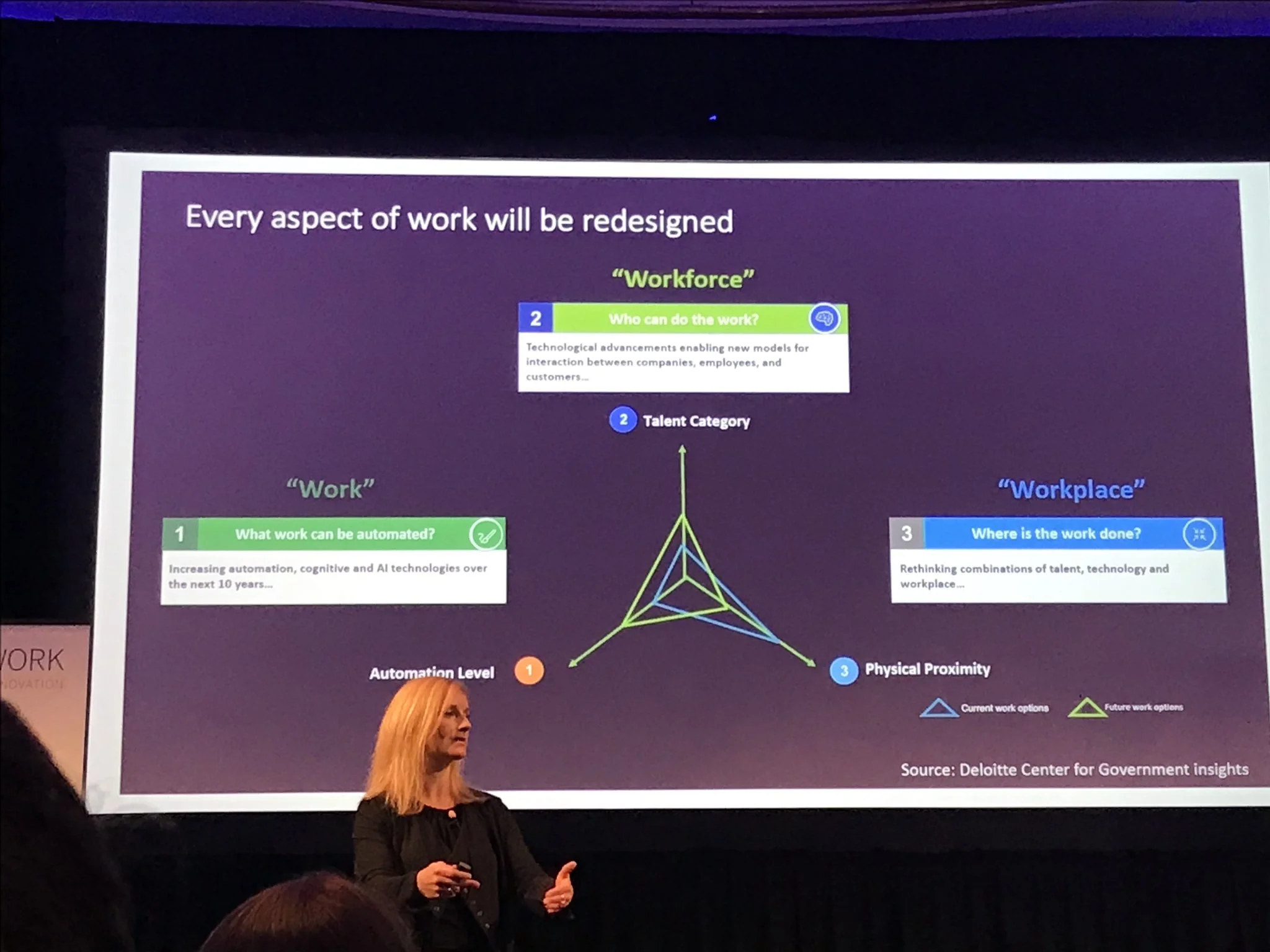Prizes and competitions provide one way to stimulate innovation and tap “solver communities” that may not have been leveraged previously when considering some of our nation’s grand challenges. As I wrote this past summer, there have historically been several hurdles to Federal agencies conducting prizes and competitions, including explicit authorization by Congress to do so. It’s hard enough for agencies to design and operate an effective prize and competition, but without a universal, permitting legal framework the upfront procedural work can be so burdensome that they are often never even explored as possible options. This upfront procedural burden has been one of the largest roadblocks for prizes and competitions up until this point.
On December 21, 2010 Congress moved forward with a crucial piece of the puzzle to drive forward the President’s Innovation Agenda and the principles of Open Government. On this day, they passed the America COMPETES Reauthorization Act of 2010 with a series of provisions that will empower public sector use of prizes and challenges to spur innovation. The Prize Competitions section of the Act, which starts on page 17, provides Federal agencies across the Executive Branch with explicit authority to conduct prize competitions. The prize authority provision draws heavily from S. 3530, the Reward Innovation in America Act of 2010, introduced by Senators Pryor and Warner in June 2010 and it builds upon the Stevenson-Wydler Technology Innovation Act of 1980 (15 U.S.C. 3701 et seq).
The impact of this legislation cannot be overstated; this is a HUGE win for Open Government and Government-supported innovation in the United States. Whereas recently prizes and competitions were largely ignored in common government vernacular, now not only has the White House supported their use through guidance issued this summer but also the legislative branch has demonstrated their support by passing the America COMPETES Act. Arguments against the viability and legality of these tactics to enhance problem solving and collaboration are now much more difficult. Happy holidays to Open Government practitioners throughout the US!
This Act significantly advances agencies’ abilities to use prizes and competitions by granting and/or expanding several key exemptions, provisions, and authorities. I’ve summarized some of the provisions below, in relative order of importance (in my opinion). At a glance, this Act:
1. Grants several authorities:
- Expands general prize authority to EACH agency head
- Expands gift authority for prizes and competitions
2. Institutionalizes various incentives and disincentives for participation:
- Prohibits the US Government from acquiring intellectual property rights (incentive)
- Limits eligibility for prize winners to US incorporated entities or US citizens/permanent residents (disincentive to some)
- Transfers risk of participation to participants (disincentive to some)
3. Eases the procedural burden of conducting prizes:
- Exempts Judging Panels from the Federal Advisory Committee Act
4. Specifies several procedural requirements for leveraging prizes:
- Specifies prize publication requirements:
- Clarifies limitations on the availability and amount of funding for prizes
It’s important to note that this Law does not prevent agencies from seeking broader prize authorities through the normal legislative process. So if any of the terms outlined above are severely restricting for agencies, they can lobby their committees to get more appropriate authorities expanded. This broad prize authority isn’t the same as all-encompassing prize authority. It can only go further in the future, and it does not limit the existing authorities that are already out there.
I believe in the coming years we will see the need emerge for a senior prize executive within agencies similar to the senior procurement executive and grants management office roles. Procurement and grant making are subject to management controls to ensure competition is fair and laws are followed. As prizes are another tool to leverage non-governmental expertise for service provision and problem solving, I expect to see conversations about centralizing prize management discipline within agencies to surface in the near future.
The rest of this blog posting describes in detail the key features of the America COMPETES Reauthorization Act of 2010 outlined above and my thoughts on the possible impact of those provisions. As always, please feel free to reach out to me at @jenngustetic at any time during this series to continue to conversation. Happy reading and happy holidays to all!
Jenn
Granting Several Authorities
Expands general prize authority to EACH agency head: Sec 24(b) states that “Each head of an agency, or the heads of multiple agencies in cooperation, may carry out a program to award prizes competitively to stimulate innovation that has the potential to advance the mission of the respective agency.” Before this, some agencies had the authority to conduct prizes and competitions. However many others did not. Having the explicit authority to award prizes is a crucial first step in paving the way for agencies to consider these methods as viable options for problem solving and stimulating innovation.
This is an enhancement from the Senate version of this bill that was passed this summer. That version stated: “each head of an agency may carry out a program to award prizes competitively to stimulate innovation that has the potential to advance the mission of the respective agency.” The final version of the Act allows agencies to cooperate in carrying out prizes together, increasing the opportunities for interagency collaboration in problem solving: a huge improvement.
As Vivek Kundra, the Federal CIO earlier stated “the real value lies at the intersection of multiple data sets.” Likewise, many of our Nation’s grand challenges lie at the intersection of multiple agency missions. Many partnerships benefit from such coordinated efforts, such as the Sustainable Communities Partnership among HUD-DOT-EPA. But even with coordinated grant awards, our ability to stimulate innovation in this sector is limited by the statutory authorities that each Agency has. This new kind of authority has potential to further break down those barriers to interagency collaboration in problem solving.
Expands gift authority for prizes and competitions: Sec 24(m)(1) states that “support for a prize competition under this section, including financial support for the design and administration of a prize or funds for a monetary prize purse, may consist of Federal appropriated funds and funds provided by the private sector for such cash prizes. The head of an agency may accept funds from other Federal agencies to support such competitions.” Up until this point, if a non-governmental organization was paying for anything at all (financial or in-kind) agencies would have to pay close attention to their gift authority. In most cases, a legal consultation and partnership agreements are required that detail the agency’s authorities for accepting gifts. In other cases, the Federal government is prohibited from receiving gifts. This “expanded gift authority”, for the use of prizes and competitions, will significantly assist agencies in identifying the funds to support the prize “purse” and well as operational expenses, making prizes a more viable option still.
Institutionalizing Various Incentives and Disincentives for Participation
Prohibits the US Government from acquiring intellectual property rights: Sec 24 (k) states that “the Federal Government may not gain an interest in intellectual property developed by a participant in a competition without the written consent of the participant. [However], the Federal Government may negotiate a license for the use of intellectual property developed by a participant for a competition.” To many, protection of intellectual property (IP) is a fundamental principle for encouraging entrepreneurship and innovation. It’s important that an inventor can retain “ownership” over their submission for many reasons; without the ability to retain ownership over an idea, individuals may have less incentive to create new ideas. Thus to IP protection advocates, without this provision prize participants might not invest as heavily in the competitions because there would be no guarantee that they could recoup their investment in the end. Thus, to IP protection advocates this is a very important incentive that was included in the legislation.
What would have been to consequence of allowing the government to acquire IP rights, you might ask? With the IP rights (which may be acquired through written consent according to this Act) the government could leverage new discoveries to further the entire national interest, rather than the segment that they can afford to buy as a product or license. This is the policy stance that China as a nation has taken. This has impacted Chinese companies significantly. They are experts at reengineering existing processes and product development lifecycles to create more efficient and low cost versions of a product. But they are not nearly as good at inventing new products because of their lack of IP protection. There is little incentive for companies and individuals to invest in new products if they are unable to recoup that investment when new innovations become available for all companies to produce in the national interest.
Limits eligibility for prize winners to US incorporated entities or US citizens/permanent residents: Sec 24 (g) (3) requires that to be eligible to win a prize under this section, “in the case of a private entity, [an entity] shall be incorporated in and maintain a primary place of business in the United States, and in the case of an individual, whether participating singly or in a group, [an individual] shall be a citizen or permanent resident of the United States”. This provision may have a cooling effect on the total innovation possible as a result of this Act. By limiting the solver community to only US incorporated entities or US citizens/permanent residents, agencies may not be able to select, in all cases, the best solution for a particular problem. This provision arguably limits competition. Some might say that with Buy America provisions gaining ever-increasing attention, this small bit of protectionism doesn’t hurt us. And even though the intent of this provision seems to be to reward Americans for their creativity, others might say that it may also result in less optimal solutions than if more competition had been allowed. This is a politically divisive issue.
Also, by limiting eligibility to win a prize, this Act raises questions about whether or not non-US citizens will legally be able to participate in commenting and discussion functions for idea focused challenges even if they don’t win the final prize. The Act lists several explicit prize types that are allowable including point solution, exposition, and participation (see this McKinsey report for more types). Exposition prizes in particular could be very difficult to manage in practice given the eligibility limitation in the Act. Exposition prizes are typically focused on identifying and highlighting good ideas—which is also commonly known as “ideation”. Ideation often involves on-line voting and commenting (see these examples: HUD’s Ideas In Action,Department of Education’s Open Innovation Portal, and the EPA’s Open Government Ideascale page, for example). If non-US citizens cannot win a prize, then they may have less incentive to comment on and enrich ideas. Furthermore, agency legal shops may interpret this Act to mean that non-US citizens should not even be permitted to vote and comment to draw a bright line around participation and award eligibility. However, this policy position presents a complicated technical issue as agencies will need to control and authenticate users who are participating on-line. That’s no small feat.
Transfers risk of participation to participants: Sec 24 (i)(1)(b) states that “registered participants shall be required to agree to assume any and all risks and waive claims against the Federal Government and its related entities, except in the case of willful misconduct [and for misuse of intellectual property, trade secrets or confidential information], for any injury, death, damage, or loss of property, revenue, or profits, whether direct, indirect, or consequential, arising from their participation in a competition, whether the injury, death, damage, or loss arises through negligence or otherwise.” (emphasis added) The effect of this is rather large. As stated in one of my previous blog posts, one of the key structural issues to consider when setting up a partnership between the public and private sectors is the degree of risk shared by each partner. Usually, in PPPs, risk sharing can be negotiated based on which party is more able to bear various risk types (financial, legal, political, safety, etc…) and there is often a price associated with those risks for the private partner in the form of insurance. If risks are unevenly allocated the private partner may not be able to bear the cost of all those risks and thus chose to not participate.
This Act pre-determines, to a certain extent, the risk sharing profile for prizes; most of the risk will be borne by participants—not the government. There are pros and cons to having participants bear the majority of risk, especially for technical experiments (like for the NASA centennial prizes) where (1) there is a vast degree of uncertainty in the safety of new technologies and (2) the cost to bear the risk could be prohibitive for participants. The one exception to this risk allocation however serves to protect participants from misuse of their IP during the course of the competition (in addition to protection from willful misconduct). The risk for mishandling IP, trade secrets and confidential information is borne by the Government according to the Act. The bottom line is that with no flexibility in how to allocate risk sharing, this provision may deter a lot of possible solvers from participating in prizes and competitions. However, the ability to retain all IP rights offset some of the potential chilling effects of having participants assume all risk
Eases the Procedural Burden of Conducting Prizes
Exempts Judging Panels from the Federal Advisory Committee Act: Sec 24(k)(4) states that “the Federal Advisory Committee Act (5 U.S.C. App.) shall not apply to any committee, board, commission, panel, task force, or similar entity, created solely for the purpose of judging prize competitions under this section”. FACA applies when an advisory committee is established or utilized by one or more agencies, in the interest of obtaining advice or recommendations for the President or one or more agencies or officers of the Federal Government. This law requires advisory committees to follow a rigorous process for selection and meetings. Exempting judging panels could significantly relieve many of the procedural burdens currently associated with selecting prize winners through panels of expert judges.
Specifies Several Procedural Requirements for Leveraging Prizes
Specifies prize publication requirements: Sec 24 (f) requires that for each prize competition, the head of an agency shall publish a notice in the Federal Register announcing the prize subject, rules, process, amount, and evaluation criteria. Posting on challenge.gov alone DOES NOT meet this requirement. The law now requires that prizes be posted alongside other notifications to the public in the Federal Register.
Clarifies limitations on the availability and amount of funding for prizes: Sec 24(m)(2) states that “notwithstanding any other provision of law, funds appropriated for prize awards under this section shall remain available until expended.” This is what is known in the Federal government as “no-year money”. This is important because expiration of funds will not influence the deadlines for prizes and competitions. Some, like the centennial prizes may need to be active for years in order to find a winner, and “1 year or 2 year” funds that have been appropriated with an “expiration date” can make those open ended deadlines impossible. This provision adds flexibility to prize deadlines based on the nature of the problem the prize is attempting to address.
Sec 24(m)(4) states that “no prize competition under this section may offer a prize in an amount greater than $50,000,000 unless 30 days have elapsed after written notice has been transmitted to the Committee on Commerce, Science, and Transportation of the Senate and the Committee on Science and Technology of the House of Representatives. [Furthermore], no prize competition under this section may result in the award of more than $1,000,000 in cash prizes without the approval of the head of an agency.” Agency heads must approve all prizes in excess of $1M and Congress must approve all prizes in excess of $50M. To me, this indicates Congress’ recognition that large prizes to address grand challenges are encouraged and supported. Recent trends towards “small money” apps and video contests are of course permitted as a result of the legislation, but the Act opens the door for much more strategic investments in large scale prizes.
(Note: Originally posted on the Phase One Consulting Group, Government Transformation Blog for a special featured Govloop series when I was an employee there. www.phaseonecg.com/blog)






